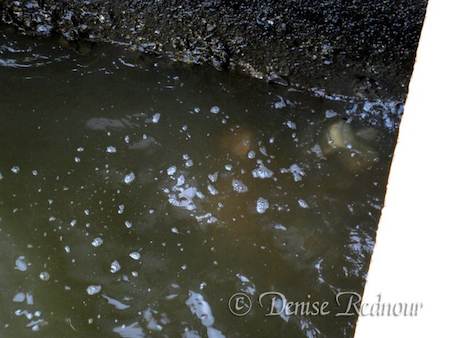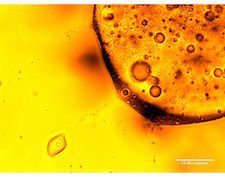 To be certain, this article is late, and one hopes not too late. To begin with, a lot of folks were likely overjoyed to see the President happily swimming and splashing in the Gulf of Mexico with his daughter Sasha.
To be certain, this article is late, and one hopes not too late. To begin with, a lot of folks were likely overjoyed to see the President happily swimming and splashing in the Gulf of Mexico with his daughter Sasha.
The message was clear enough – Take a deep breath. All is safe, go on about your business – there is no more oil spewing into the Gulf region.
In fact, he was frolicking in St. Andrew Bay, off Alligator Point, where there was no oil. But, pay that no mind. He was close by, and on the job.
Then, when the opportunity came for press questions, Obama was shellacked with inquiries about the prudence of building a Muslim Cultural Center a few blocks away from Ground Zero. From the looks of it, the public relations effort was a success. Lots of smiles and hugs all around.
Of course, the President and his entourage could have traveled just a few miles westerly, and ended up in, say, Long Beach, Mississippi and gone for a dip with the dead fish just under a concoction of light, sweet crude and Corexit. Corrects what?
Yes, those are dead fish just under that concoction of light, sweet crude and Corexit. Corrects what?

This picture and many more like it demonstrate the seriousness of this issue, as well as the purposeful pullback of resources, both from BP and the US Government.
Yes, Kenneth Feinberg has his hands on twenty billion of BP’s dollars, but already the ‘conditions’ are emerging to determine valid claims which has only served to delay and deny those in dire need.
Then, with all the appropriate props and positioning required for even the experienced prestidigitator, this pie chart came tumbling into our homes via mass media—and just look at the numbers!

It would appear that only 26 percent of the oil is left, or “residual” as the chart indicates. And somehow, BP was able to recover 17 percent of the oil directly from the wellhead. Strange, how those underwater cameras never recorded any direct recovery—just gushing and distributing perhaps fifty million gallons of oil into the Gulf through the Summer.
And BP is not going to divulge how many gallons of the highly toxic dispersant they, without proper authority, sprayed into the Gulf. Direct were those orders from Thad Allen – “I am in charge and the incident commander.” It must have been some strange vortex from which he told BP to cease the use of Corexit (the extra toxic version) and let the scientists examine the evidence. Testing, ostensibly, for short and long term negative health conditions on all living things. Something which ought to have happened earlier—but wait—some countries have outright bans on the use of Corexit. A few folks know something. Yet millions of gallons were distributed.
Nor will BP discuss Corexit’s ingredients, citing proprietary laws.
According to the AP, on August 6, the owner of the Gulf Shores Sea Products in Bay St. Louis, Mississippi “came across a 2-square-mile patch of dead, floating fish on Friday about 12 miles off Gulfport, Miss. ‘Dead fish all over,’ he said.”
Thousands of dead fish have been found in the Mississippi River, reported authorities earlier this week in Louisiana’s St. Bernard Parish.
I’m talking about 5,000 to 15,000 dead fish. Different species were found dead including crabs, sting rays, eel, drum, speckled trout, red fish,” said Parish president Craig Taffaro. State officials say the fish may have died due to low oxygen levels in the water. Even though officials haven’t yet confirmed the link between the dead fish and the BP oil leak, the Times-Picayune reported the fish were found floating on the water’s surface and “collected in booms that had been deployed to contain oil that leaked from the BP spill.”
And the stories just go on and on. Despite a concerted effort to restrict journalistic access, and BP’s direct contractual arrangements with numerous oceanographic experts, scientists, and researchers, complete with disclaimers to not discuss or proffer theories about Gulf recovery issues, a few well known individuals are now stepping forward with what appears to be diametrically opposed information to the infamous ‘pie-chart.’
Professor Ian MacDonald, and oceanographer at Florida State University reported his research indicated that perhaps only 10% of the oil was “gone.” His concerns extend to the amount of methane gas percolating in the water, as well. Readers familiar with the documentary “Gasland” will immediately recognize the horrendous possibilities inherent in this scenario.
Other scientists decry the investigative process itself. Read this stunning statement by Linda Hooper-Bui, an ecosystem biologist at Louisiana State University A&M and the LSU Agricultural Center:
Were I to accept research funding directly from BP or from one of their contractors, I’d have to sign a contract that includes a three-year no publication clause. If I signed either a contract to work with NRDA or to work under BP or one of their contractors, I would have virtually unlimited access to study sites and more research support. But the price of the secrecy involved with participating in NRDA or conducting research under the auspices of BP is too high. My student and I couldn’t discuss our data, results or experiences for three years or until the litigation against BP is settled. More importantly, we couldn’t publish any of our results. I couldn’t write this essay. The data could be tied up for years in litigation just like that of the scientists who participated in NRDA after the Exxon Valdez incident. Every day it takes resolve to continue on the path of honest and open science on the effect of stressors on the smallest creatures on the coast. If current trends continue, I fear that the independent researcher may be added to the list of species that will be endangered by this ecological disaster.”
One thing is for certain. There is much more information out there, awaiting revelation. And there are several professional individuals who have yet to surface, no doubt still considering their options. Yes, the matter is politicized, as is said.
And as a likely example of politics in action, a Department of Energy (Lawrence Livermore) backed study, reported by The Scientist said:
Deep sea microbe populations are evolving in response to the Deepwater Horizon disaster, helping to digest the oil that continues to contaminate the Gulf of Mexico, according to a study published this week on the ScienceExpress website.

Warm and fuzzy won’t placate Gulf residents. And if the truth turns cold and clammy, we shall see an unfolding ecological event of horrific proportions.


